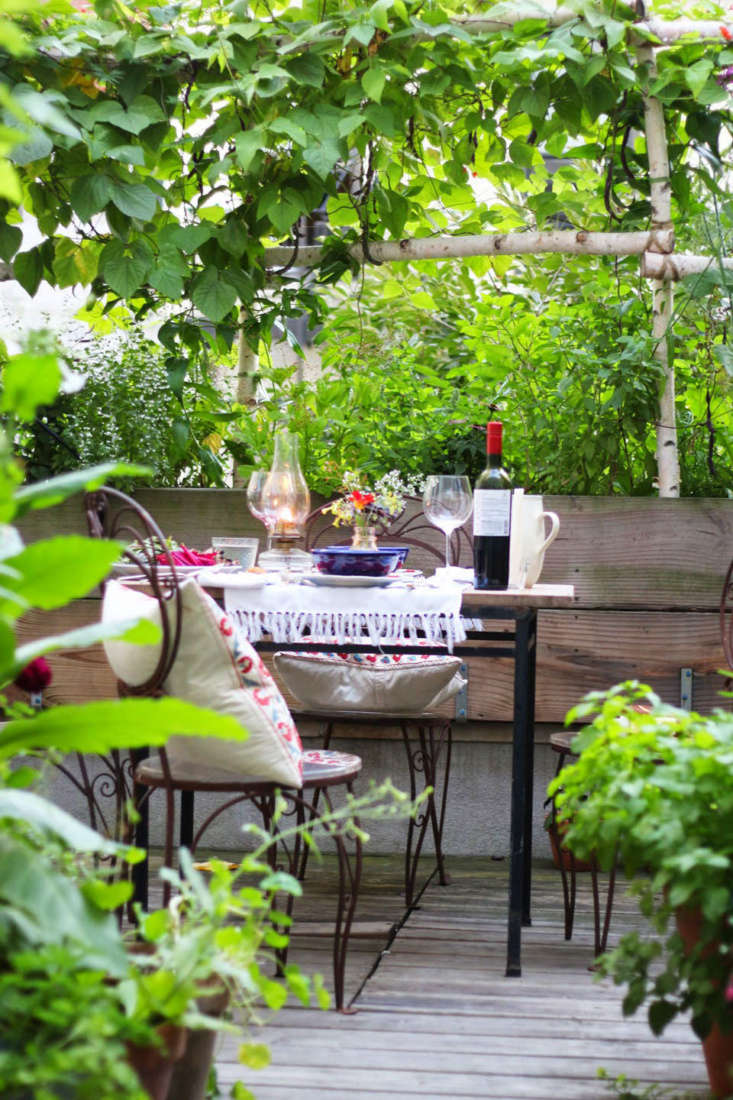If I were interviewing plants for garden positions and reading their resumés, I’d expect certain minimum qualifications, like multi-seasonal appeal. And then I would look for more. To get a callback, a candidate would need multiple talents: ornamental value, of course, but also inherent deliciousness. Edible herbs, fruits, and flowers would make the shortlist. But at the top of the list would be vegetables. Beautiful vegetables.
This is one of the (many) lessons I have learned in a city garden, where growing space is very valuable. But no matter where you garden, if you cherish every square inch of soil, or every single pot, you can incorporate vegetables with flowering and foliage plants. This is a smart way to blend the beauty of edible plants with their purely ornamental cousins. And by planting diversely, you will boost a garden’s ability to fight off pests and diseases, too. Mixed plantings are a tenet of permaculture.
Read on to learn more about 14 vegetables to incorporate seamlessly into a flower garden. From common to unusual varieties, these edibles have gorgeous foliage or striking flowers and fruit, are imposingly statuesque, or helpfully twining. They serve the same purpose—creating depth, a sense of scale, or covering a fence—as non-edible annuals and perennials. Plus, we can eat them.
Photography by Marie Viljoen.
Cardoons

Cardoon leaf midribs are an excellent vegetable, best picked before the plant blooms (peel, and blanch before sautéing). Traditionally the leaves are tied together to blanch the inner midribs, for vegetable use, but for ornamental impact leave them loose.
After cardoons bud, they can be left to bloom (their thistle flowers are purple; pick them before they set seed or the plant can become invasive, as it is in California), or you can cut the tender bud stems, peel off the outer fibers, and boil until tender. And of course, the buds can be eaten as you would an artichoke. Grow cardoons in full sun. They perform best in USDA zones 7 to 9 and require infrequent but deep watering. Different cultivars offer leaves with prickles, or soft felty fur.
Artichokes

More openly branched than cardoons, artichokes need room to spread but will reward with their large and distinctively toothed leaves, and strong branches topped with their iconic globes. They require good drainage and infrequent, deep watering.
See more growing tips in Artichokes: A Field Guide to Planting, Care & Design.
Leeks

We all know ornamental alliums. What fewer people realize is that ordinary edible onions also make spectacular flowers. Intersperse leeks among the flowers and see them rise tall by midsummer.
Garlic

Scallions

Swiss Chard


Kale

Growing kale near roses or other plants prone to aphid attacks will divert the aphids’ attention: not only does the kale act as a trap crop, it also offers sprays of healthy leaves from cold to hot weather.
See more growing tips in Kale: A Field Guide to Planting, Care & Design.

Kale is one of my top ornamental vegetable picks because of its variety and versatility. Frilly purple leaves taste good, blend seamlessly with silvers and blues, and offer pools of color within greener beds.
Cabbage

Given time to develop, cabbage heads form sculptural anchors within borders while quietly attracting slugs and snails to their lower leaves, sparing other plants. Celebrate cabbages at the end of the season by turning them into a crisp slaw, or a cold-weather braise with apples or plums.
See more growing tips in Cabbage: A Field Guide to Planting, Care & Design.
Eggplant

As a long-time container gardener, I have a soft spot for glossy eggplants. Plant one per pot in full sun and feed them well with organic fertilizer. Choose cultivars for the size of the plant, as well as for the color and form of the fruit.
Malabar Spinach

Planted in mid to late spring, Malabar spinach will cover fences by mid-summer. The juicy leaves can be eaten raw (they are also appealing edible plates) or quickly sautéed. See more growing tips in Spinach: A Field Guide to Planting, Care & Design.
For a Malabar spinach recipe, see our Garden-to-Table Recipe: Spicy Spinach from 66 Square Feet.
Pole Beans

Pole beans, with their purple runners, were a low-cost and lovely way to create a leafy sense of privacy, and flourished in four hours of sun. Picking the mature beans in no way compromised the effectiveness of the screen. Scarlet runner beans and lablab beans work equally well. See more growing tips in Pole Beans: A Field Guide to Planting, Care & Design.
Common Milkweed

Common milkweed is edible in all stages from shoots through buds, flowers, and pods. The flowers are intensely fragrant and are pollinator magnets. Common milkweed spreads via runners underground and can pop up at random in a bed, so grow it in a wild border where you can share it with the insects who love it. There is an entire chapter devoted to milkweed’s cultivation and uses in my cookbook Forage, Harvest, Feast.
Water Hyacinth

An unusual wildcard to end: Better known as waterblommetjie in its native South Africa, sweetly scented water hyacinth, or Cape pondweed (Aponogeton distachyos) blooms from fall to spring where winters are not freezing (it is dormant in summer months). The flowers are extremely pretty and equally delicious (succulent and crunchy, and slightly sour).
See more growing tips in our curated guide to Edible Gardens 101. For more on companion plants, read:
- The Garden Decoder: What Is ‘Companion Planting’?
- Ask The Expert: Sarah Raven’s 10 Tips for a Kitchen Garden
- Everything You Need to Know About Ornamental Alliums
- Garden Visit: Secrets of Another Century at Colonial Williamsburg
- Everything You Need to Know About Cottage Gardens









Have a Question or Comment About This Post?
Join the conversation